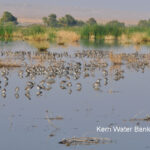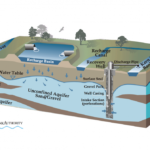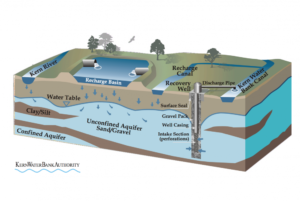Water banks and groundwater recharge projects are important tools to manage California’s water supply.
California’s farmers, water managers, and many cities have long recognized the importance of groundwater recharge in helping to restore aquifers during times of water abundance to help prepare for the inevitable dry periods common in Mediterranean climates.
Water banks and groundwater recharge projects are part of integrated water storage solutions that move water from reservoirs behind dams to land that has the right geology and soils to allow for storage.
Some examples of water banks and groundwater recharge projects include:
Consolidated Irrigation District South and Highland Basin recharge project
Deer Creek Basin and Wildlife Complex
Groundwater recharge also occurs when farmers apply water across their fields instead of using precision irrigation methods such as drip and microirrigation.
Studies are underway to improve the efficiency of this type of recharge, as it can help to meet both the needs of crops, and recharge the groundwater.



